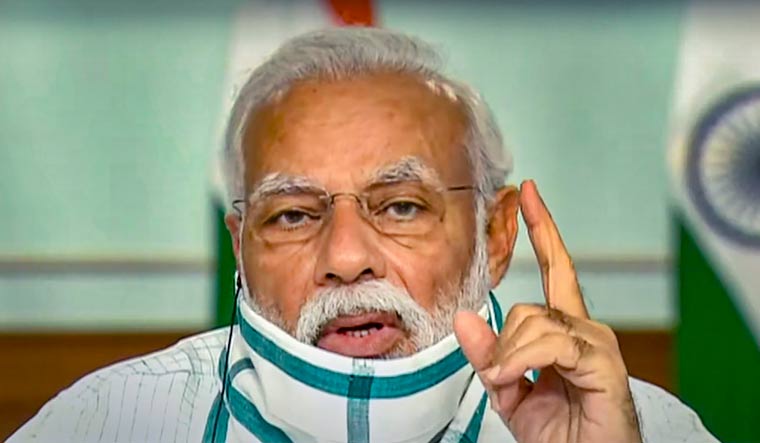Remember those memes popular on social media where two contrasting pictures are posted under the captions ‘what you expect’ and ‘what you actually get’? With four sets of ‘stimulus packages’ done (and one more to go on Sunday morning), Finance Minister Nirmala Sitharaman’s announcements may well resemble that meme, at least in the minds of many citizens who were expecting some element of a cash bonanza.
The euphoria that Prime Minister Narendra Modi's announcement of Rs 20 lakh crore package to save the country from a post-COVID economic turmoil generated seemed to have subsided in the past few days. There are schemes for easy credit, policy tweaks, cold storage and warehousing chains for farmers, and even rule tweaks to rev up private mining and space exploration.
COVID-19 relief package? Really?
“This is like a budget speech, not a stimulus package,” commented a Delhi-based analyst after listening to the fourth tranche of the finance minister’s announcements on Saturday evening. “A stimulus package should be to provide relief to individuals, families, small businesses and industries impacted by the economic slowdown caused by the coronavirus pandemic.”
That sentiment, growing over the four days that Sitharaman made her daily announcements, did manage to dampen the initial euphoria since Modi uttered the magic figure. On May 14, after the first set of measures, the stock markets tanked—Sensex tanked 886 while the Nifty dropped 240 points—both losing more than 2.5 per cent of their value. Ironically, they were buoyed just the previous day after hearing the Rs 20 lakh crore figure; it was a different story altogether once the details started emerging.
While on paper, the business chambers and industrial houses duly welcomed the packages every day as the ‘right vaccine’ to cure post-COVID economic travails, the muted enthusiasm was palpable. Modi’s call to people to get ‘vocal for local’ also made economists brace for another round of deep disruptions. “We should not be rocking the very foundation of the ‘open economy’ which has been built with careful calibrations especially since 1991,” argued Lekha Chakraborty, economist and professor at the National Institute of Public Finance and Policy. Added Sharad Kumar Saraf, who heads the exporter’s body FIEO, “This will make market access for exports more difficult.”
The inherent issue with Sitharaman’s daily offerings is something like the demand-supply conundrum. The demand is for an urgent financial injection to help the nation clamber out of the economic wasteland it is in after nearly two months of lockdown and the rising number of COVID-19 cases paving the way for another phase of lockdown. But the supply is determinedly Modi’s long term but bold reformist approach to overhaul the cogs that run the wealth creation machinery.
The aim? To rejuvenate the fundamentals of India’s original agro and manufacturing based economy (before a service-oriented money influx stole the thunder post liberalisation). This, the prime minister hopes, will have a two-pronged effect. Make the local economy self-sufficient and resilient that it will not crumble like a pack of cards when a crisis like the pandemic hits. Second and more importantly, it can even over-arch to aim to be the place the world comes for its manufacturing requirements, now that trust in China is running at a new low.
“These are structural reforms, and once you go through them, you see it still follows the aims this government had set for itself, including the doubling of farmer income,” S. Ravi, tax specialist and former chairman of the Bombay Stock Exchange, pointed out.
Ravi also discounted the popular argument that the government had not resorted to the widespread expectation of kick-starting the economy by putting more money in the hands of the consumers. “The Indian economy is not in a great enough condition to do direct transfers like the way the middle classes may have wanted, but the easing of loans as well as taking care of PF (for next three months) in a way does exactly that.” While he feels we should wait for the announcements to come in to see how different sections and sectors have benefited, his worry is not the announcements per se. “The announcements can be anything, but I am more concerned about the effective implementation of all these decisions, the guidelines and how fast they roll it out.”



